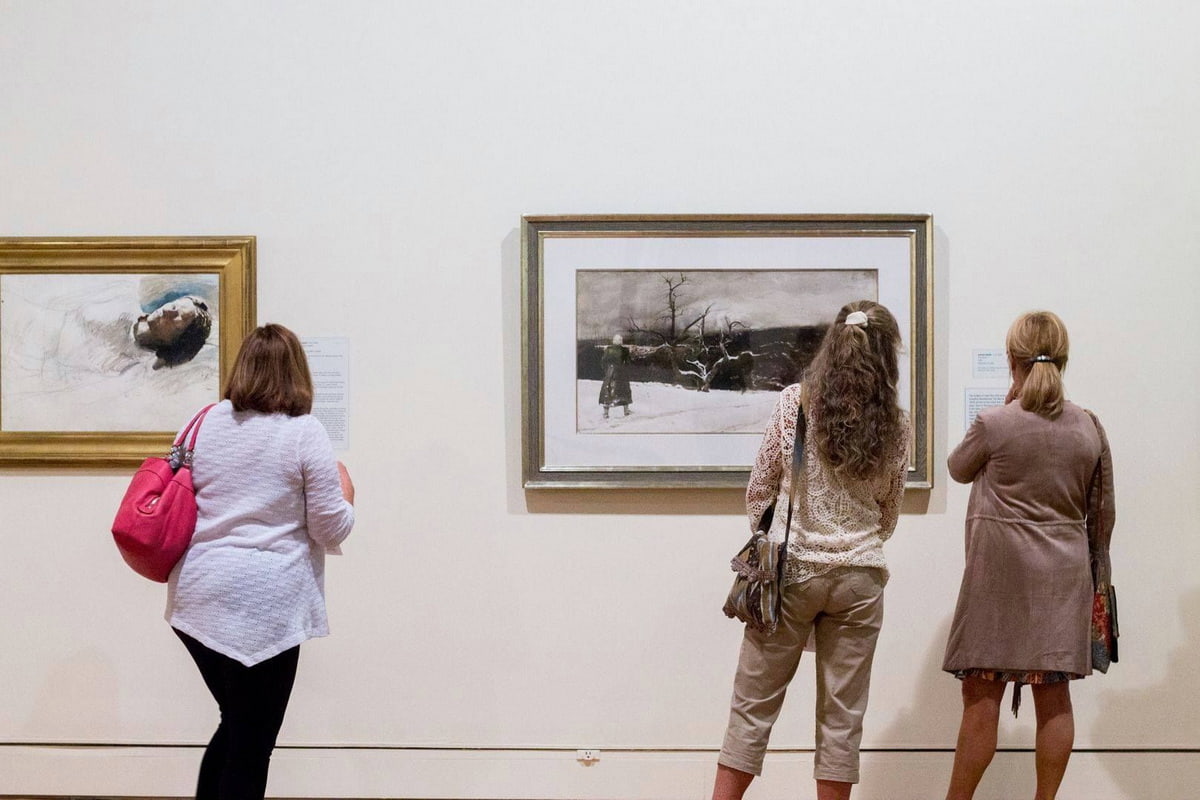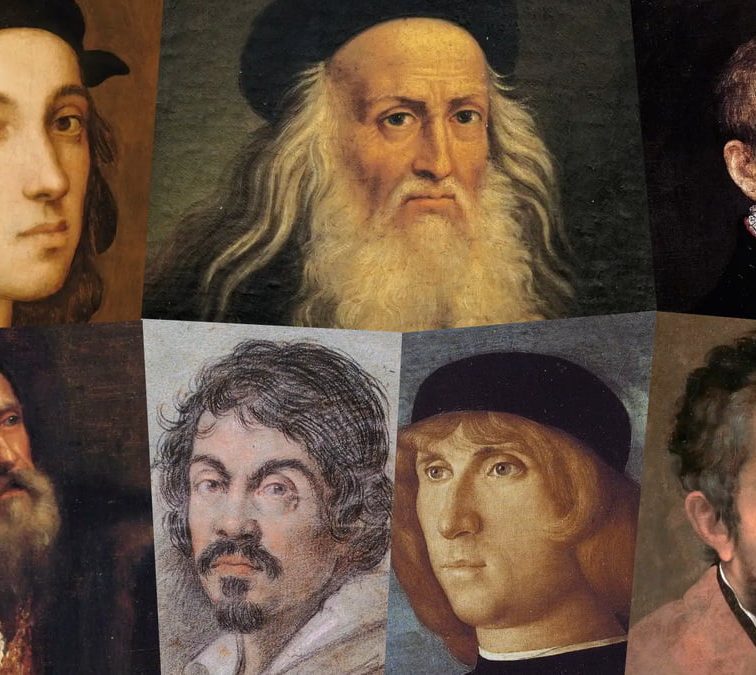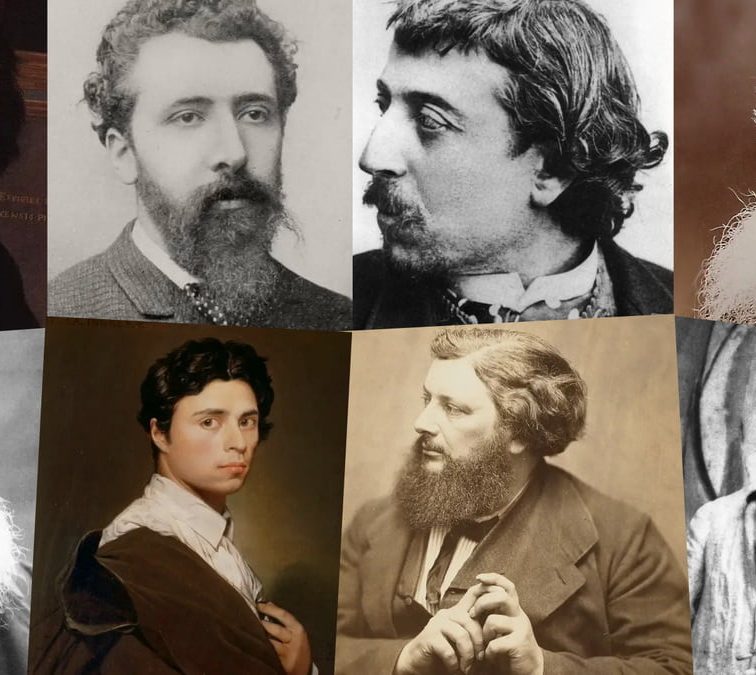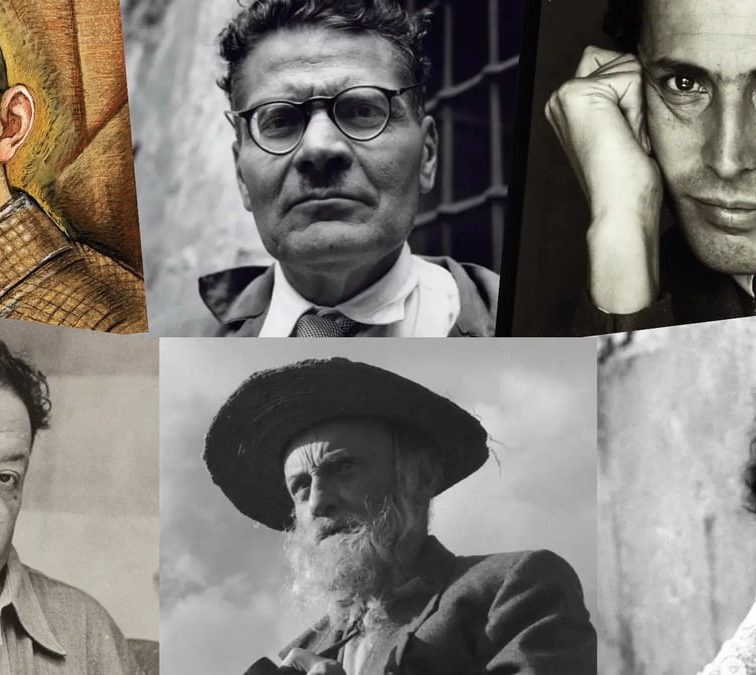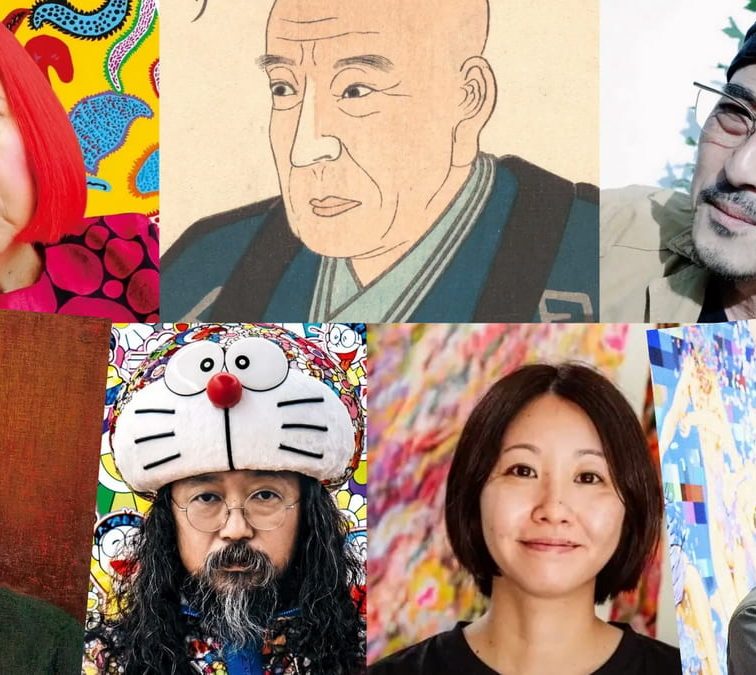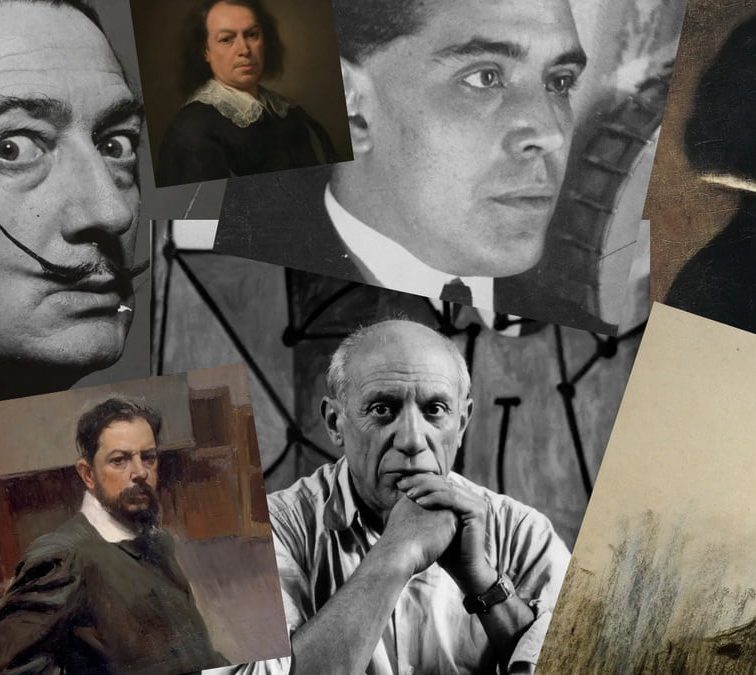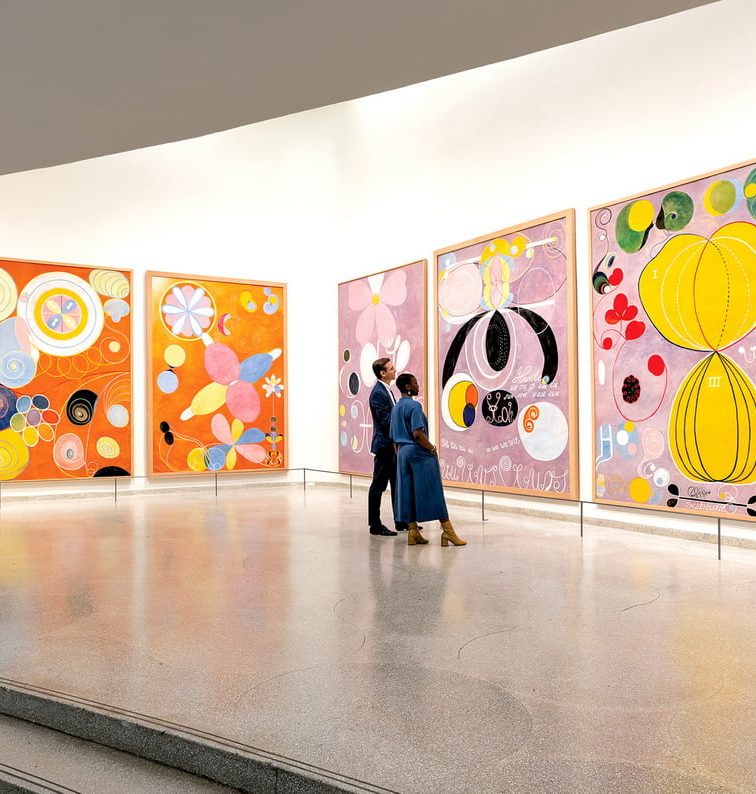Watercolor painting, a medium known for its fluidity and transparency, has been a window into the souls of artists and the spirit of their times. From Albrecht Dürer’s pioneering Renaissance techniques to David Hockney’s modern innovations, this art form has captured everything from the minutiae of wildlife by John James Audubon to the atmospheric landscapes of William Turner.
Each brushstroke tells a story, revealing insights into history, culture, and personal expression. In this exploration, we delve into the lives and works of some of the most famous watercolor artists in history, unraveling the magic they created with pigments and water.
1. Albrecht Dürer: Renaissance Watercolor Icon
Albrecht Dürer, a key figure in the German Renaissance, significantly impacted watercolor art. Born in Nuremberg in 1471, Dürer began as a goldsmith’s apprentice before his drawing talent led him to Michael Wolgemut’s workshop. His Italian journey in 1494-1495 was pivotal, during which he created stunning watercolor landscapes of the Alps, pioneering in European landscape art.
Dürer is also renowned for his engravings and woodcuts, blending Gothic and classical motifs. His theoretical works on mathematics, perspective, and proportions further highlight his influence as an artist and thinker. Works like “Self-Portrait” (1500) and “The Four Apostles” (1526) exemplify his mastery in detail and symbolism.
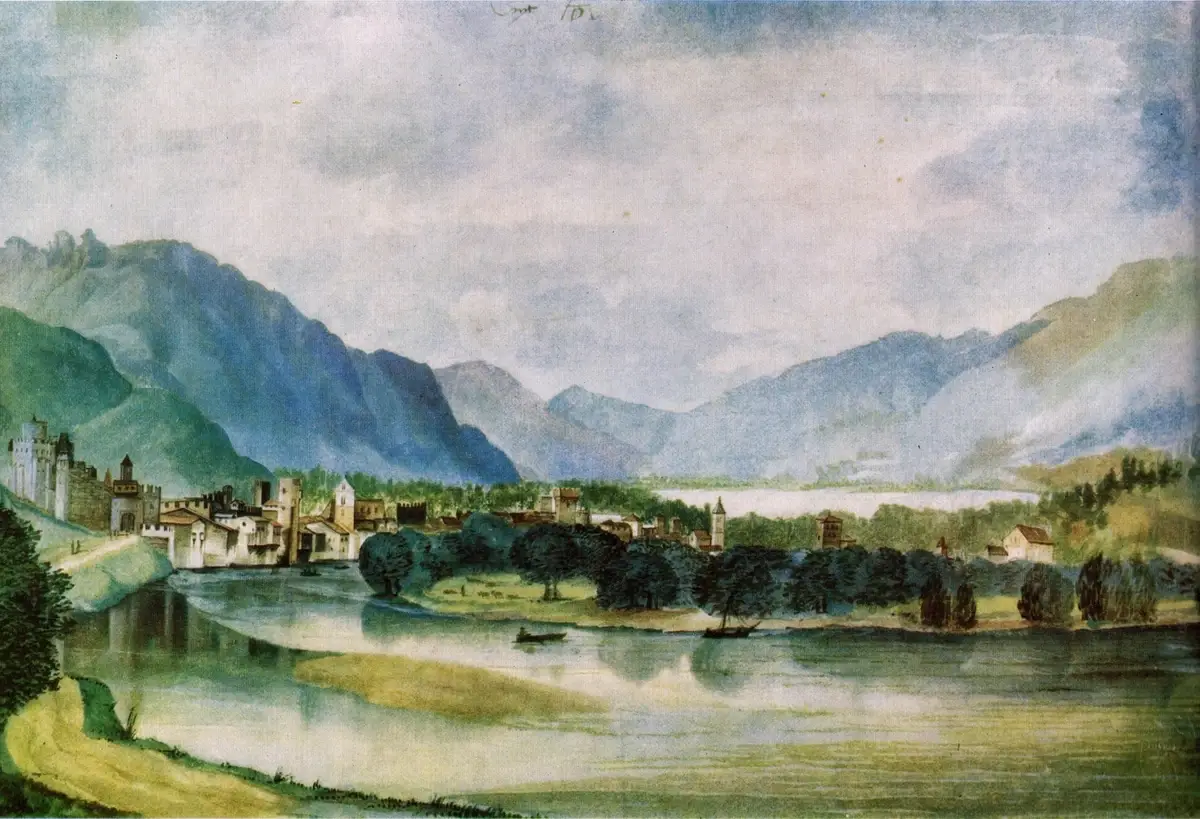
Albrecht Dürer’s landscape watercolor. Image: Wikimedia Commons
2. William Turner: Light and Color Maestro
Joseph Mallord William Turner, born in 1775, was a master of landscape painting, renowned for his expressive use of color and light. A child prodigy, Turner’s talent led him to the Royal Academy of Arts at just 14. His works, notably “The Fighting Temeraire” and “Rain, Steam and Speed,” showcased his unique approach to Romanticism, influencing the Impressionist movement.
Turner, known for his eccentricity and reclusiveness, maintained a complex relationship with fame. His style evolved to focus more on atmospheric effects, a shift that paralleled changes in his personal life. Passing away in 1851, Turner left a legacy as a pivotal figure in landscape art, impacting future generations of artists.

Turner’s “The Fighting Temeraire”. Image: Wikimedia Commons
3. John James Audubon: Wildlife in Hues
John James Audubon, born on April 26, 1785, in what is now Haiti, emerged as a seminal figure in American ornithology and art. His profound passion for birds was evident from his childhood in France, and it blossomed fully after he moved to the United States. Audubon’s ambition to document all North American bird species resulted in the creation of his magnum opus, “The Birds of America” (1827–1839). This monumental work, comprising detailed illustrations of birds in their natural habitats, is celebrated for its scientific accuracy and artistic elegance.
Audubon’s self-taught skills in art and naturalism were pivotal in his journey. His depictions of birds went beyond mere representation; they captured the essence and behavior of the avians in vibrant watercolors. This blend of art and science not only made Audubon an icon in ornithology but also in the world of art. His legacy continues through the National Audubon Society, dedicated to the conservation of birds and their habitats.
Audubon’s life was a tapestry of artistic pursuit and deep observation of the natural world, a testament to his enduring fascination with avian life. His detailed illustrations remain a benchmark for bird artists and a vivid chronicle of American wildlife.
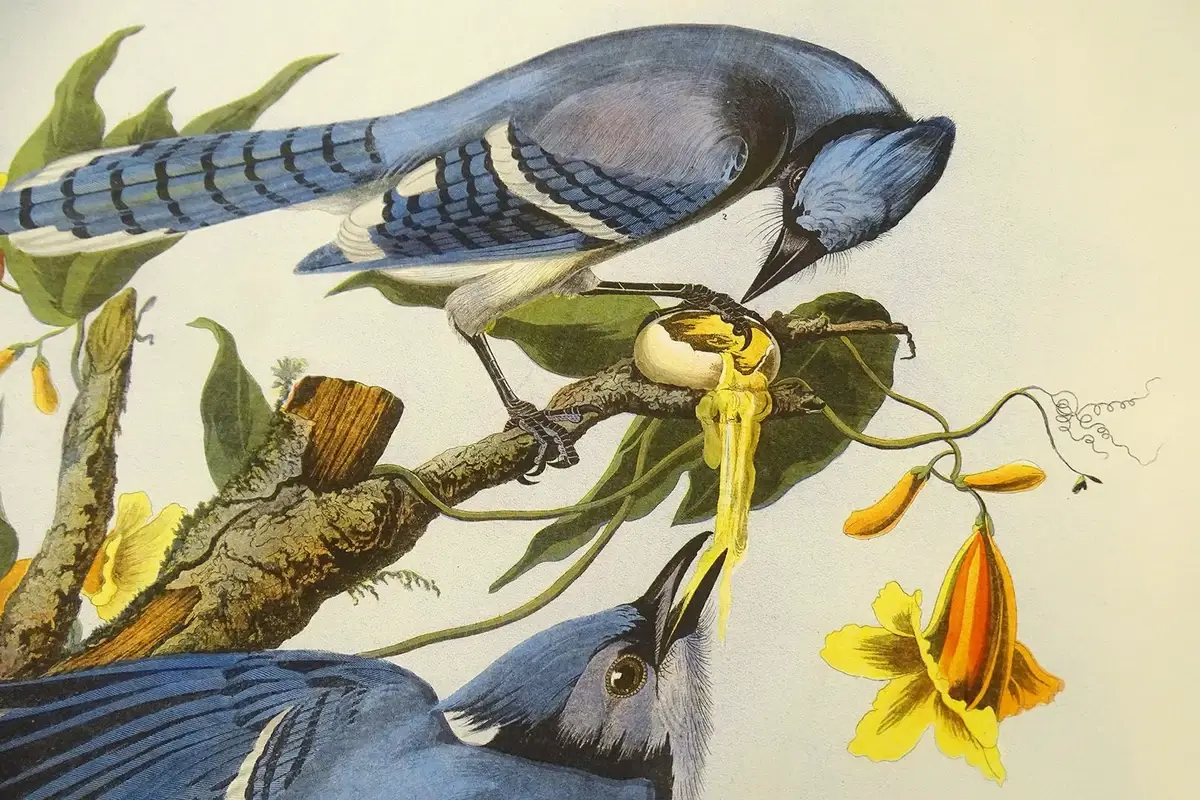
An illustration from Audubon’s “The Birds of America”. Image: bates.edu
4. Winslow Homer: America’s Landscape Artist
Winslow Homer, born in 1836 in Boston, Massachusetts, stands as a quintessential American landscape painter, especially revered for his marine subjects. Beginning his career in a lithographic firm, he transitioned to a freelance illustrator in New York, with his Civil War illustrations for Harper’s Weekly profoundly influencing his later works.
Post-Civil War, Homer focused on rural life, childhood, and postwar America, infusing his art with themes of reconciliation and nostalgia. Works like “Prisoners from the Front” (1866) and “Snap the Whip” (1872) are acclaimed for their emotional depth and realism. Homer’s adeptness in sketching and watercolor lent a unique spontaneity to his oil paintings, most notably in “The Gulf Stream” (1899), where his observational prowess and technical skill merge seamlessly.
Residing later in Prouts Neck, Maine, his dramatic sea paintings, born from his seacoast home, solidified his status as a seminal late 19th-century American artist. His contributions encapsulate the emotional and thematic complexities of American life, displaying a unique blend of naturalism and Japanese influence in his artistic style.
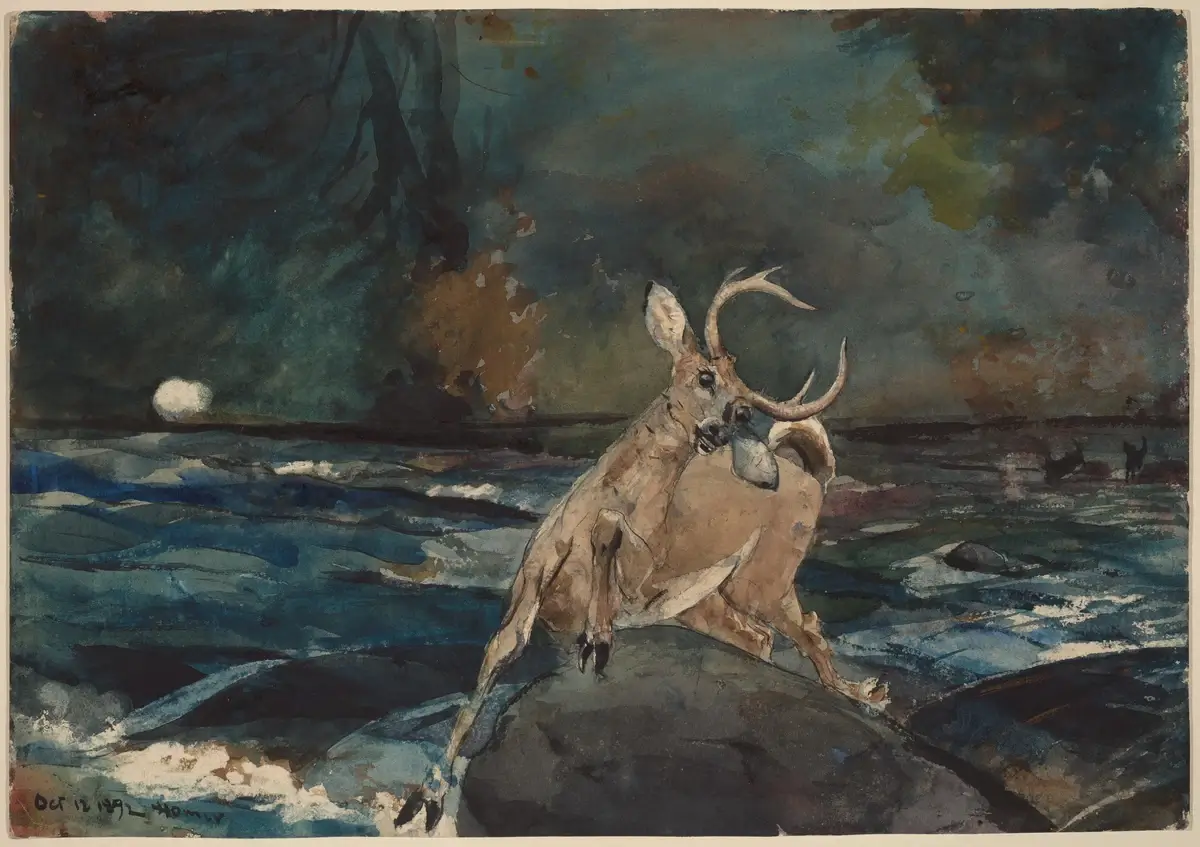
Winslow Homer, “A Good Shot, Adirondacks”, (1892). Image: nga.gov
5. Georgia O’Keeffe: Nature’s Abstracts
Georgia O’Keeffe, born in 1887, was a pivotal figure in American Modernism, known for her large-format paintings of natural subjects, especially flowers, bones, and landscapes. Her unique style blended precisionism with abstraction, focusing on the inherent beauty of her subjects.
O’Keeffe’s early years were marked by traditional realism, but she soon moved towards abstraction under the influence of Arthur Wesley Dow’s teachings. Her time in New York and the Southwest profoundly influenced her work, leading to iconic paintings like “Jimson Weed/White Flower No. 1” and “Cow’s Skull: Red, White, and Blue.”
O’Keeffe’s art was a testament to her personal interpretation of nature, making her a significant figure in the development of American art.

Tony Vaccaro’s photograph of Georgia O’Keeffe with “Pelvis Series, Red with Yellow” in 1960. Image: wbur.org
6. Paul Klee: Harmonizing Color & Music
Paul Klee, born in 1879 in Switzerland, was an artist deeply influenced by his musical background. Trained as a violinist, his parents’ musical professions profoundly shaped his artistic approach, especially in the interplay of color and music in his work. His transformative visit to Tunisia in 1914 marked a pivotal moment, leading to his famous declaration, “Color and I are one. I am a painter.” This experience ignited a deep exploration of color theory, which became central to his unique artistic style.
Klee’s art, a harmonious blend of Expressionism, Cubism, and Surrealism, reflects the synthesis of music and visual art. His paintings, like “Polyphony” and “Harmony in Blue-Orange,” are visual symphonies, where colors create harmonies and rhythms akin to musical compositions. He used color blocks and complementary colors to echo musical notes and textures.
As a Bauhaus teacher, Klee’s influence extended to modern art and design. His teachings on form, design theory, and particularly color, are invaluable resources for contemporary artists and designers. Klee’s legacy lies not only in his vibrant and rhythmic artworks but also in his significant contributions to the educational aspects of art.
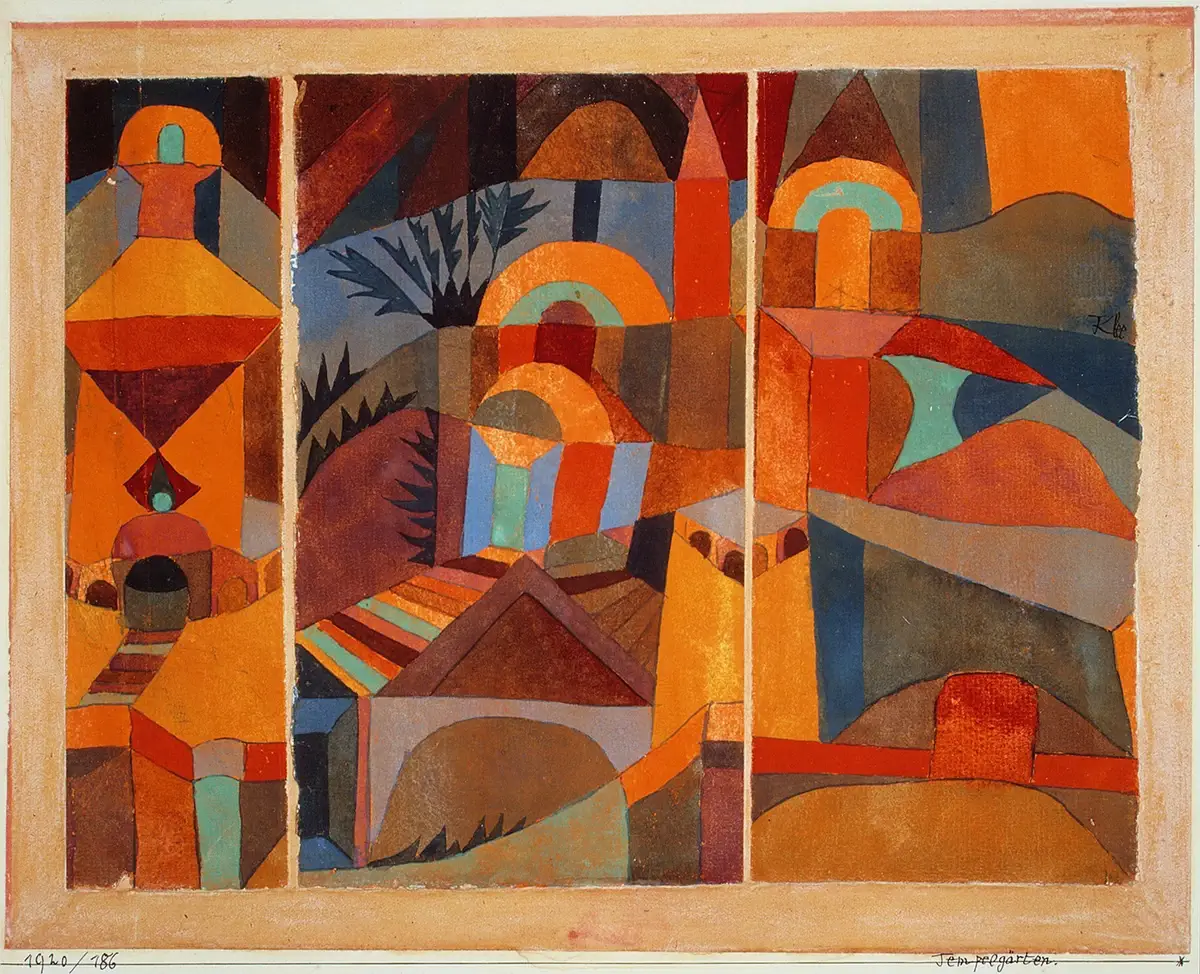
Paul Klee, “Tempelgärten”, (1920). Image: Wikimedia Commons
7. Egon Schiele: Intense Expressionist
Egon Schiele, an Austrian Expressionist painter born in 1890, is celebrated for his intense and emotionally charged works. His art, characterized by raw sexuality and stark depiction of the human form, reflects a deep and often unsettling exploration of identity and emotion. Schiele’s journey into the art world was marked by his association with Gustav Klimt, who greatly influenced his early development. Schiele’s style evolved into a distinctive form of expressionism, distinguished by twisted body shapes and expressive lines.
Schiele’s works often elicited controversy, particularly his bold and unapologetic exploration of sexuality and the human body. His art transcended the norms of the time, challenging conventional views on beauty and propriety. Despite his brief life, Schiele’s work had a significant impact on modern art, paving the way for a more candid and personal expression in visual arts.

Egon Schiele, “Two Little Girls”, (1911). Image: wikiart.org
8. Andrew Wyeth: Rural America in Realism
Andrew Wyeth, born on July 12, 1917, in Chadds Ford, Pennsylvania, was a quintessential American artist known for his realistic depictions of rural America. His father, N.C. Wyeth, a well-known illustrator, served as his only teacher, instilling in Andrew a deep appreciation for nature and rural landscapes. Wyeth’s artwork often focused on the land and people of his hometown in Pennsylvania and his summer home in Maine. His most famous painting, “Christina’s World” (1948), is a testament to his ability to evoke emotion and narrative in his works.
Wyeth’s paintings are characterized by their detailed precision and subtle color palettes. Despite their realistic appearance, his works often convey a sense of subjective emotion, moving beyond mere photographic representation. Throughout his career, Wyeth remained devoted to exploring the rural landscapes and people that were intimately familiar to him, creating art that was both personal and universally resonant.
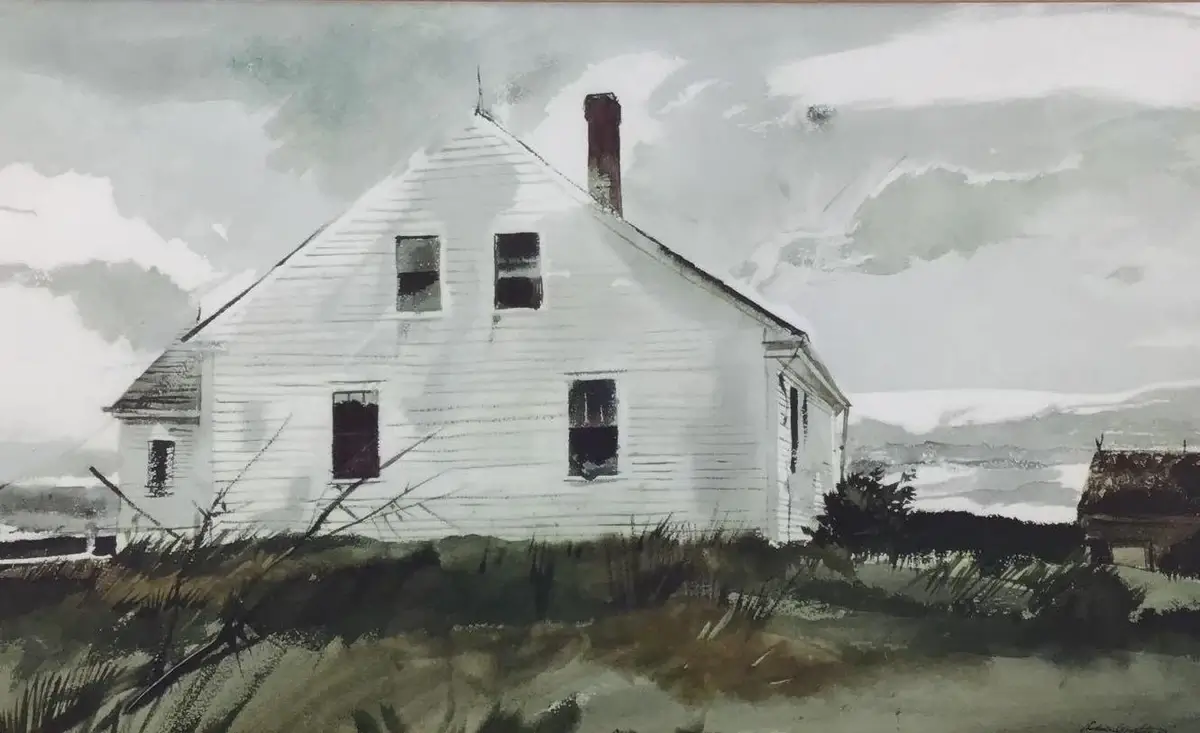
Andrew Wyeth, Bradford House, (1965). Image: mutualart.com
9. John Singer Sargent: Elegance in Art
John Singer Sargent, born in Florence in 1856 to American parents, emerged as one of the most prominent portrait painters of the Edwardian era. His upbringing was a nomadic journey through Europe, immersing him in diverse cultures and languages. Sargent’s artistic journey began under the tutelage of Carolus-Duran in Paris, whose influence was pivotal in shaping his early style. His approach, characterized by direct painting and a loaded brush, reflected the influence of Diego Velázquez and the Impressionists.
Sargent’s works, especially his portrait of Madame X, were both acclaimed and controversial, showcasing his unique blend of realism and impressionism. Despite initial challenges in establishing his career in England, his exceptional skill in capturing the elegance and character of his subjects eventually won him widespread recognition. He was known for his ability to convey the personality of his sitters through sophisticated brushwork and composition. His later life saw a shift towards landscape painting and a withdrawal from the restrictions of formal portraiture.
Sargent’s legacy is not only in the beauty of his portraits but also in his role as a bridge between traditional portraiture and modernist tendencies. His work continues to be celebrated for its technical brilliance and ability to capture the essence of the Gilded Age.

John Singer Sargent, “Simplon Pass. The Tease”, (1911). Image: Wikimedia Commons
10. Zhang Daqian: East Meets West in Art
Zhang Daqian, a celebrated 20th-century Chinese artist, seamlessly integrated Eastern and Western artistic techniques. Born in 1899, Zhang was not only a master of traditional Chinese ink and wash painting but also adept in watercolor, influenced by Western Impressionism from his travels. This amalgamation shines through in his landscape paintings, where the delicate transparency of watercolors merges with the bold strokes of Chinese ink, creating a transcultural artistic language.
His prowess extended beyond landscapes to intricate portrayals of flowers and birds. Zhang’s artistic journey reflects a constant exploration and adaptation, making him a pivotal figure in modern Chinese art. His works stand as a vibrant testament to the symbiotic fusion of Eastern and Western art, demonstrating his extraordinary talent in bridging diverse artistic worlds.
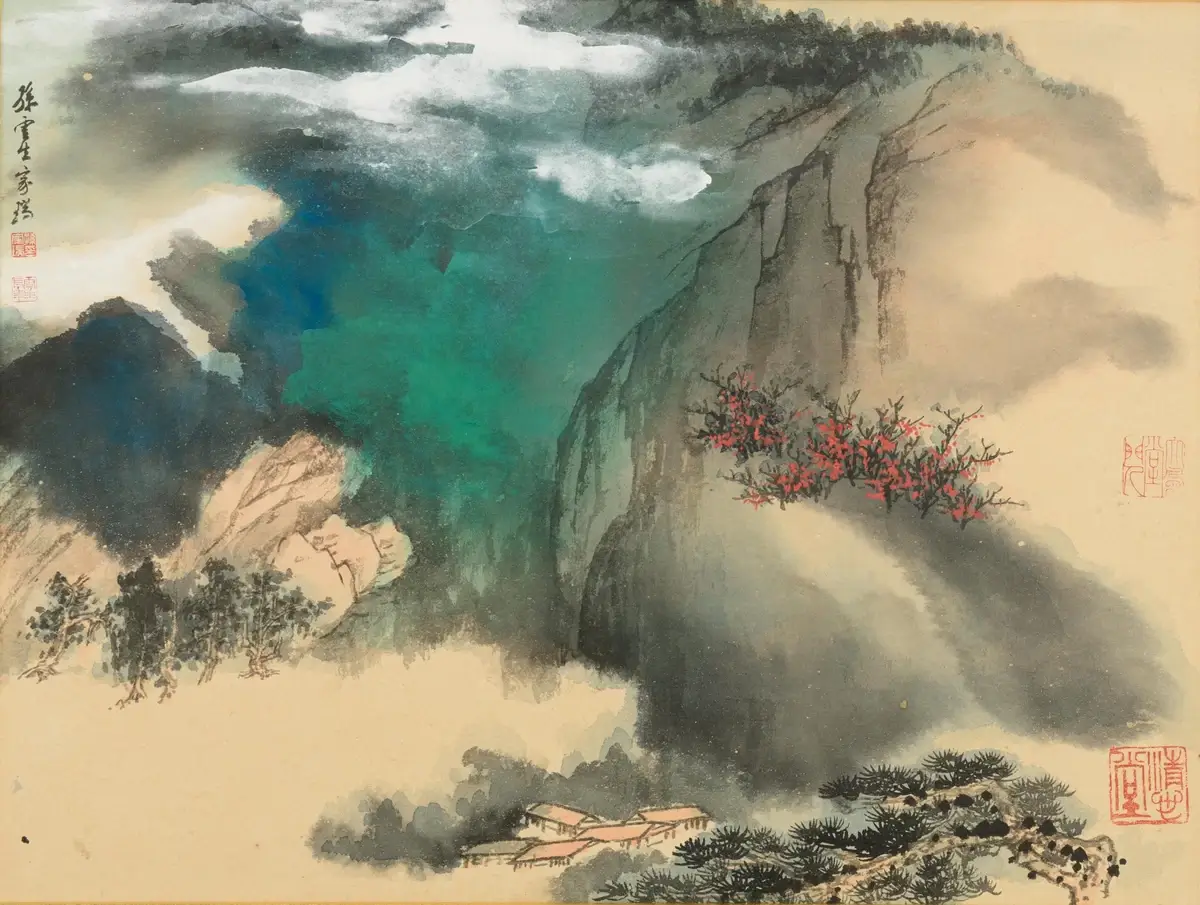
Zhang Daqian, a Chinese watercolour on paper. Image: carlobonte.be
11. Edward Hopper: American Scenes in Hue
Edward Hopper, born in 1882 in Nyack, New York, was a prominent American realist painter known for his profound depictions of urban and rural scenes in America. While widely recognized for his oil paintings, Hopper was equally skilled as a watercolorist. His watercolors, started in earnest in the 1920s, often portrayed the serene and subtle beauty of American landscapes and cityscapes. He had a unique ability to capture the essence of everyday scenes with a poetic undertone, using a palette that reflected the true hues of American life.
Hopper’s watercolors are marked by their eloquent realism, a characteristic that has been celebrated in his work. His approach to painting, especially in watercolor, combined meticulous detail with a unique sense of composition and light, creating images that resonate with viewers due to their familiarity and underlying narrative.
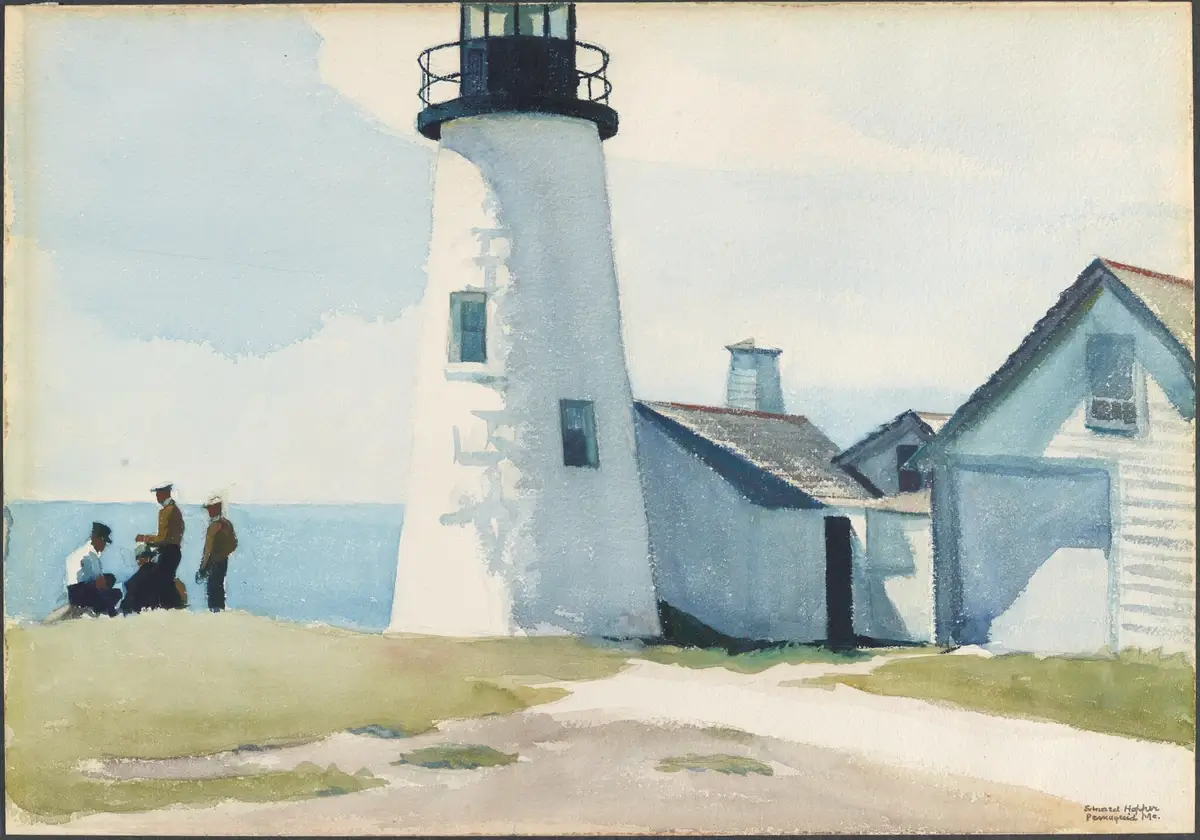
Edward Hopper, Pemaquid Light, (1929). Image: portlandmuseum.org
12. Charles Demuth: A Precisionist’s Vision
Charles Demuth, an American painter born in 1883, was a key figure in the Precisionist movement, a style known for its celebration of the industrial age with sharply defined, quasi-Cubist forms. Demuth’s journey into modernism began with his trips to Europe between 1907 and 1921 and his interactions with avant-garde styles in New York City, notably Cubism. His friendship with William Carlos Williams inspired his most famous painting, “I Saw the Figure 5 in Gold,” a unique blend of visual and literary art highlighting the interconnectedness of different creative expressions during the 1920s.
Demuth’s Precisionist works often featured urban and rural landscapes, including industrial elements like bridges, smokestacks, and skyscrapers. His series of paintings inspired by the architecture of his hometown, Lancaster, in oils and tempera, showed a balance between realism and abstraction. His contributions to Precisionism, along with artists like Georgia O’Keeffe and Charles Sheeler, significantly shaped American Modernism. Demuth’s works are characterized by their irony and sometimes pessimistic view of industrial subjects.
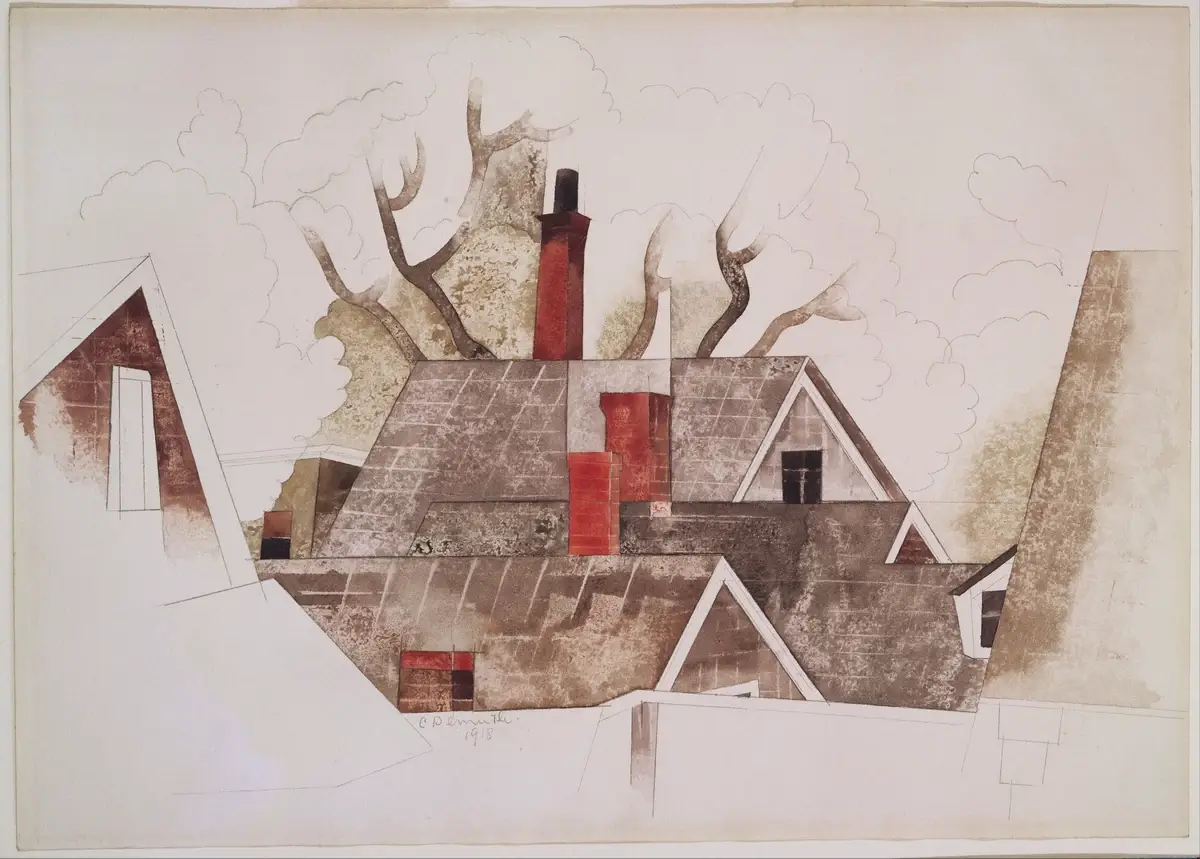
Charles Demuth, “Red Chimneys”, (1918). Image: Wikimedia Commons
13. Beatrix Potter: Magical Children’s Art
Beatrix Potter, born on July 28, 1866, in England, was not just an author but a gifted illustrator and a natural scientist. She is best known for her enchanting children’s books featuring anthropomorphic animals, like those in “The Tale of Peter Rabbit.” Potter’s unique artistry was largely shaped by her secluded childhood, filled with the exploration of flora and fauna, which she meticulously observed and depicted in watercolors. Her passion for the natural world is vividly reflected in her illustrations, which are known for their detailed and realistic portrayal of animals and landscapes.
Potter’s journey into writing and illustrating began in her thirties with the self-publication of “The Tale of Peter Rabbit.” Her subsequent children’s books were not just stories; they were visual adventures crafted with her delicate watercolors. These books have sold over 250 million copies worldwide, enchanting generations of children.
Potter’s legacy extends beyond her books. She was a pioneer in character merchandising and a conservationist, credited with preserving much of the land that now constitutes the Lake District National Park.

Beatrix Potter, “The Tea Party”, (1893). Image: jonkers.co.uk
14. David Hockney: Modern Watercolor Ways
David Hockney, born in 1937, has been a pivotal figure in the art world, notably in the Pop Art movement. Educated at the Bradford College of Art and the Royal College of Art in London, his unique artistic journey is characterized by an evolving style, initially marked by expressionism and later by a distinct use of color influenced by his time in Los Angeles. Hockney is celebrated for his vibrant artworks, including watercolors, which reflect his fascination with light and straightforward realism.
His famous series of swimming pool paintings, inspired by the intense light and modern aesthetics of Los Angeles, demonstrate his innovative approach to color and form. In the 1980s, Hockney’s exploration of photography led to groundbreaking photocollages, showcasing his versatility and willingness to experiment. Later, returning to Yorkshire, he continued to create art, often using watercolors to depict the English countryside with a vibrant palette.
David Hockney’s career highlights his mastery of blending traditional and modern techniques, making him a significant figure in contemporary art. His work, from Californian landscapes to English woods, is a testament to his commitment to exploring the myriad ways art can be created and experienced.

David Hockney, “Midsummer: East Yorkshire”. Image: picturelondonframing.com
15. John Marin: Dynamic Watercolor Innovator
John Marin, an early American modernist born in 1870, was renowned for his dynamic and abstract landscapes, particularly in watercolor. His passion for Maine’s rugged coastline, first visited in 1914, became a central theme in his work. Marin’s approach to watercolor was revolutionary, blending bold, chaotic abstraction with a deep sense of the natural world’s rhythm and movement. His technique often involved applying paint to mimic the natural motion of his subjects, particularly the sea, capturing its tumultuous and ever-changing character.
Marin’s works, such as “The Blue Sea” (1921) and “The Pine Tree, Small Point, Maine” (1926), are notable for their layered washes and vigorous lines, visually representing the sounds and energies of nature. He skillfully used watercolors to create vibrant, saturated colors, emphasizing the emotional and sensory experiences of the landscapes he painted. Marin’s influence extended to future generations, particularly the Abstract Expressionists, due to his unique handling of paint and abstract representation of nature.

John Marin, White Lake, Sullivan County, (1888). Image: museum.colby.edu
FAQ
Who is the most famous watercolor painter?
The most famous watercolor painter is often considered to be J.M.W. Turner. An English Romantic painter, Turner is renowned for his masterful use of watercolors, especially in his landscapes. His work demonstrates a remarkable understanding of light and color, and his technique has influenced many watercolor artists after him.
Who was the first famous artist to use watercolor?
Albrecht Dürer, a German Renaissance artist, is widely recognized as one of the first famous artists to use watercolor. His extensive travels across Europe allowed him to study various landscapes and natural settings, which he depicted with great detail and realism in his watercolor paintings.
Who was one of the few major American artists whose greatest work was in watercolor?
One of the few major American artists whose greatest work was in watercolor is Winslow Homer. Known for his powerful and expressive use of the medium, Homer’s watercolors often depicted scenes of nature and everyday American life. His watercolor paintings are celebrated for their vivid color and dynamic compositions.
Who is the father of modern watercolor painting?
William Turner is often referred to as the father of modern watercolor painting. His innovative techniques, particularly his use of light and color, had a profound impact on the development of watercolor as a serious and respected medium in the art world. His approach to watercolor was less about detailed representation and more about capturing mood and atmosphere, which was revolutionary at the time.
Is watercolor still popular?
Yes, watercolor is still a popular medium in the art world. It is appreciated for its versatility, translucence, and the unique effects that can be achieved with it. Watercolor painting continues to be a favorite among artists and hobbyists due to its portability and the distinct, often delicate, qualities it can bring to artwork.
When was watercolor most popular?
Watercolor saw a significant rise in popularity during the 18th and 19th centuries, particularly in England. This period saw the formation of societies dedicated to watercolor painting and the emergence of artists like J.M.W. Turner and William Blake, who elevated the medium to a new level of respectability and artistic achievement. The 19th century also saw a surge in popularity in America, with artists like Winslow Homer and John Singer Sargent contributing to its recognition as a serious artistic medium.


